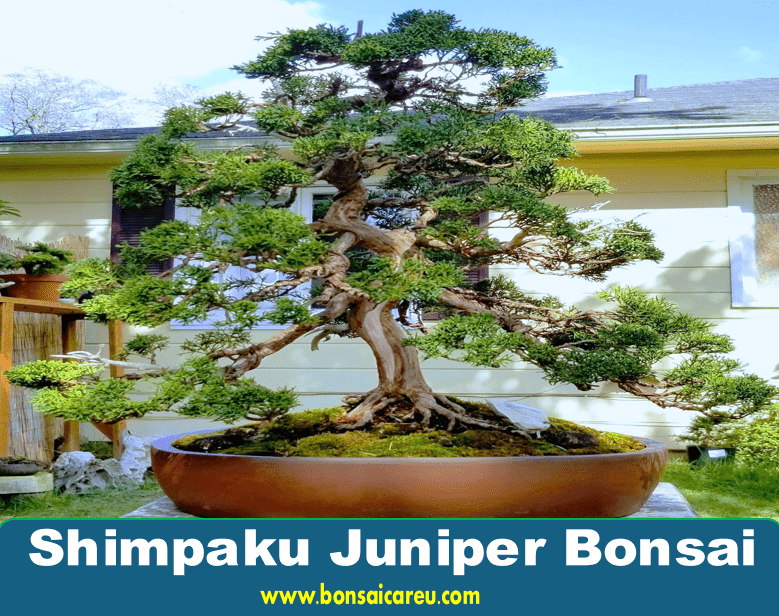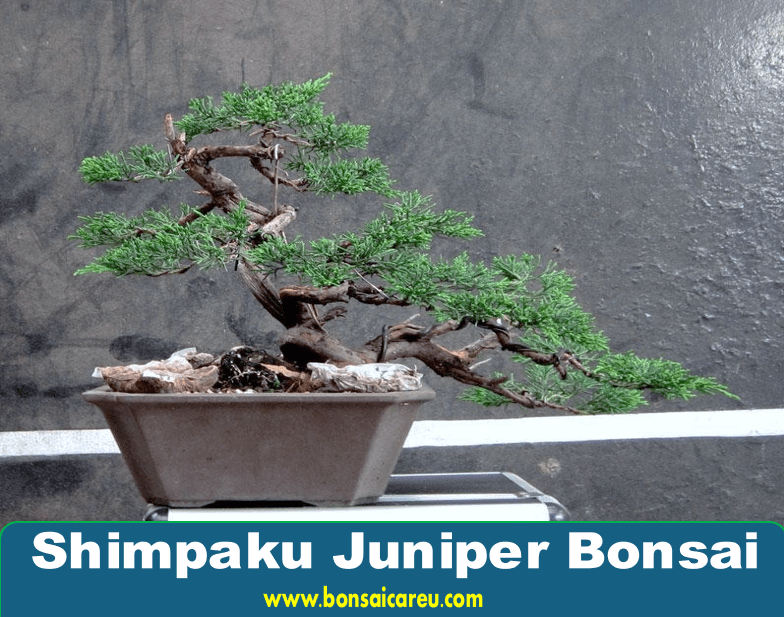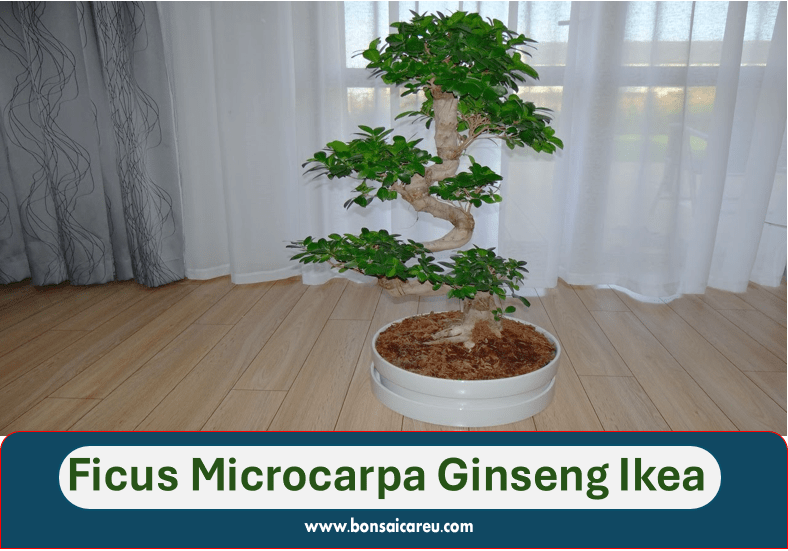Shimpaku Juniper Bonsai: For optimal growth and health, Shimpaku Juniper Bonsai requires balanced watering and ample sunlight. It’s crucial to avoid overwatering.
Introducing the Shimpaku Juniper Bonsai, a stunning and unique plant that captures the essence of nature in miniature form. Originating from Japan, this bonsai variety is cherished for its elegant appearance and distinctive foliage. With careful care and attention to watering and sunlight, the Shimpaku Juniper thrives, creating a serene and captivating presence in any space.
Whether you are a seasoned bonsai enthusiast or a newcomer to the art, the Shimpaku Juniper Bonsai offers a rewarding and fulfilling experience in nurturing and shaping a living work of art. Explore the beauty and tranquility of bonsai cultivation with the timeless elegance of the Shimpaku Juniper.

The Allure Of Shimpaku Juniper Bonsai
Aesthetic Attributes
Shimpaku Juniper Bonsai captivates with its intricate foliage and elegant silhouette.
- Delicate, needle-like leaves
- Graceful, gnarled branches
- Compact size, perfect for indoor display
Historical Significance
Shimpaku Juniper Bonsai holds a revered place in bonsai history.
- Originating in Japan centuries ago
- Celebrated for its symbolism of strength and endurance
- Prized for its association with Zen philosophy
Starting Your Shimpaku Journey
Embark on your Shimpaku journey with the beautiful Shimpaku Juniper Bonsai. This type of bonsai offers a variety of styles, including informal upright, cascade, and semi-cascade. Regarding care, balancing watering and sunlight is important to keep your bonsai thriving.
Choosing The Right Tree
When starting your Shimpaku journey, choosing the right tree is crucial. Shimpaku Juniper Bonsai trees are available in a variety of styles, including informal upright, shohin, cascade, semi-cascade, mame, twin, trunk, kishu, Japanese, tanuki, literati, miniature, twisted, small, formal upright, and more. It’s important to consider the size and style of the tree that best suits your needs and preferences. For instance, a shohin or mame Shimpaku Juniper Bonsai tree may be ideal if you have limited space. On the other hand, if you’re looking for a larger and more impressive tree, a formal upright or cascade Shimpaku Juniper Bonsai tree may be a better fit.
Essential Tools And Supplies
In addition to choosing the right tree, you’ll need the essential tools and supplies to care for your Shimpaku Juniper Bonsai tree. These include pruning shears, wire, concave cutters, root rakes, bonsai soil, and fertilizer. Pruning shears are used to trim the branches and foliage of the tree, while wire cutters are used to cut the wire used to shape the tree.
Concave cutters make clean cuts on thicker branches, while a root rake combes the tree’s roots. Bonsai soil is specifically formulated for bonsai trees and helps to promote healthy growth, while fertilizer provides the essential nutrients the tree needs to thrive. Starting your Shimpaku journey requires carefully considering the type of tree that best suits your needs and preferences and the essential tools and supplies you’ll need to care for it.
By choosing the right tree and having the proper tools and supplies, you’ll be well on your way to growing a healthy and beautiful Shimpaku Juniper Bonsai tree.
Creating Your Bonsai Vision
Discover the artistry of shaping a Shimpaku Juniper Bonsai to reflect your vision. Unleash creativity in Austin, Texas, and explore the intricate styles and techniques in cultivating this exquisite bonsai masterpiece. Find your inspiration and transform a Shimpaku Juniper into a living work of art.
Styling Techniques
Creating Your Bonsai Vision involves mastering styling techniques to shape your Shimpaku Juniper Bonsai. Trim branches strategically to achieve the desired aesthetic. Consider the tree’s natural growth pattern for inspiration.
Wiring And Shaping
Utilize wiring and shaping techniques to mold your Shimpaku Juniper Bonsai. Gently wire branches to guide their growth direction. Shape the tree to enhance its balance and overall appearance. Bonsai Transformation Shimpaku juniper becomes beautiful… bonsai Worx 9:52 YouTube Etsy Live Pre-Bonsai Shimpaku Juniper (trained); with nutrition soil $59.90 Shimpaku Juniper Outdoor Bonsai Live Tree $36.00 zenguanbonsai.com Live Pre-Bonsai Shimpaku Juniper (trained); with nutrition soil $59.90 dandyfarmer.com ‘Koby’ the Shimpaku Juniper – Specimen Bonsai $1,700.00 Lucky Bonsai Shimpaku juniper pre-bonsai $18.95
Bonsai Boy of New York Shimpaku Juniper Bonsai Tree Coiled Trunk With Shari (juniper chinensis ‘shimpaku’) $350.00 Bonsai Outlet Shimpaku Juniper Pre-Bonsai Tree (Outdoor) $29.95 easternleaf.com Shohin Shimpaku Juniper $45.00 Amazon.com $49.98 eBay Japanese Shimpaku Juniper Bonsai small size $1,200.00 Bonsai Boy of New York Shimpaku Juniper Bonsai Tree – Root Over Rock Style (Juniperus chinensis) $150.00 Etsy $35.99
Optimal Care For Healthy Growth
Optimal care is crucial for ensuring the healthy growth of Shimpaku Juniper Bonsai. This delicate art of bonsai cultivation requires specific attention to watering practices, sunlight exposure, and placement. Mastering the care techniques can help your Shimpaku Juniper Bonsai thrive and flourish.
Watering Practices
Proper watering is essential for the health of Shimpaku Juniper Bonsai. Water the bonsai when the top inch of the soil feels dry. Ensure that the water reaches all parts of the root system. Avoid overwatering, as it can lead to root rot and underwatering, which can cause the bonsai to dry out.
Sunlight And Placement
Sunlight exposure is crucial for the growth of Shimpaku Juniper Bonsai. Place the bonsai where it can receive full sun for at least six hours a day. Rotate the bonsai periodically to ensure even growth on all sides.
Seasonal Maintenance
Seasonal maintenance is crucial for the health and vitality of Shimpaku Juniper Bonsai. Proper care during each season ensures the bonsai thrives and maintains its elegant appearance. Understanding the specific maintenance tasks required during different seasons is essential for nurturing a healthy and beautiful Shimpaku Juniper Bonsai.
Pruning And Trimming
Pruning and trimming are vital tasks for maintaining the shape and health of Shimpaku Juniper Bonsai. Regular pruning helps control the bonsai’s growth, ensuring it retains its desired form and size. When the growing season begins in spring, it is the ideal time to perform pruning to encourage new growth and maintain the bonsai’s shape. Remove any dead, damaged, or overgrown branches to promote healthy growth and improve the overall appearance of the bonsai.
Repotting Essentials
Repotting is an essential aspect of seasonal maintenance for Shimpaku Juniper Bonsai. Repotting should be done every 2-3 years to refresh the soil and provide the bonsai with essential nutrients. When the tree shows signs of being pot-bound, such as slow growth or water draining too quickly, it’s time to repot. Repotting during the early spring allows the bonsai to recover and establish itself in the new soil before the growing season begins.
Troubleshooting Common Issues
When caring for your Shimpaku Juniper Bonsai, it’s essential to be aware of common problems that may arise. By understanding how to troubleshoot these issues, you can ensure the health and vitality of your bonsai.
Pest And Disease Management
Pests and diseases can pose a threat to your Shimpaku Juniper Bonsai. Regularly inspect your bonsai for any signs of infestation or infection.
- Inspect the leaves and branches for signs of pests like spider mites or aphids.
- Treat any infestations promptly using organic or chemical pesticides recommended for bonsai trees.
- Monitor the overall health of your bonsai to detect and address any disease issues early on.
Addressing Environmental Stress
Environmental stress can impact the growth and well-being of your Shimpaku Juniper Bonsai. Take steps to create an optimal environment for your bonsai.
- Ensure your bonsai receives adequate sunlight and is protected from harsh weather conditions.
- Maintain proper humidity levels to prevent drying of the foliage and roots.
- Avoid overwatering or underwatering, as both can lead to stress and health issues for your bonsai.

Frequently Asked Questions For Shimpaku Juniper Bonsai
How To Care For Shimpaku Juniper Bonsai?
Ensure proper sunlight and water balance for your Shimpaku Juniper bonsai. Avoid overwatering, and provide adequate sunlight. Prune and wire carefully to maintain its shape. Use well-draining soil and fertilize regularly. Please protect it from extreme temperatures and pests.
What Is Shimpaku Juniper?
Shimpaku juniper is a popular bonsai tree with small, twisted branches and evergreen foliage.
How Fast Does Shimpaku Juniper Grow?
Shimpaku Junipers grow moderately, typically adding 3-6 inches of annual growth.
When To Prune Shimpaku Juniper?
Prune Shimpaku juniper in late winter or early spring before new growth emerges for optimal results.
How To Pronounce “shimpaku Juniper”?
The correct pronunciation is “Shim-pa-ku Ju-ni-per. “
What Is The Origin Of Shimpaku Juniper?
Shimpaku Juniper originates from Japan and China.
Conclusion
Shimpaku Juniper Bonsai is a versatile and captivating addition to any garden or home. With its various styles and shapes, it offers a unique aesthetic appeal. Its care is relatively simple, requiring attention to sunlight and water levels. Embracing the art of bonsai with Shimpaku Juniper is a rewarding experience.


